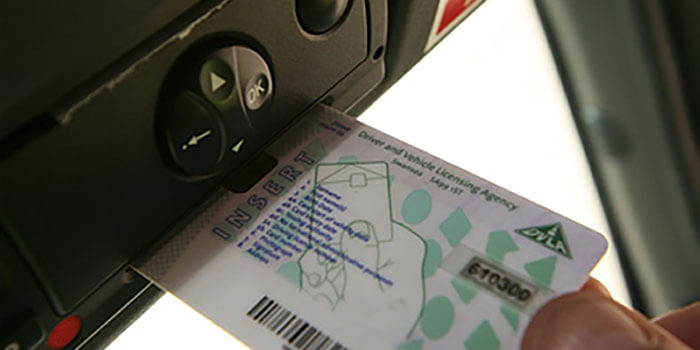John’s Story:
John is a skilled C+E lorry driver in the UK. Every day he handles large, heavy goods vehicles, expertly navigating long routes and tight spaces. But John faces some unique challenges. He has dyslexic and dyscalculic traits, which affect the way he processes both written and numerical information. While John enjoys driving and is great at it, the administrative side of his job—especially managing drivers’ hours and keeping up with regulations—proves more difficult.
Unfortunately, John’s transport manager doesn’t fully understand the way John’s mind works. As a result, no reasonable adjustments are made to help John succeed, leading to avoidable mistakes and unnecessary stress.
How Dyslexia and Dyscalculia Affect John’s Job
Dyslexia primarily affects how John processes written information. Some challenges John faces because of his dyslexia include:
- Reading policies and instructions: Lengthy documents or new regulations can be overwhelming for John. He struggles to process large amounts of written information at once, making it difficult to follow important policies.
- Misreading instructions: John may read slowly or misinterpret written instructions, especially when they’re complex or filled with technical jargon.
Dyscalculia, on the other hand, affects how John processes numbers and calculations. This creates additional challenges in areas such as:
- Managing drivers’ hours: UK lorry drivers must strictly follow regulations to ensure they don’t exceed their driving time or miss required breaks. John uses a digital tachograph to record his hours, but he struggles with manual entries, such as calculating how much time he needs to rest or drive.
- Making time calculations: Dyscalculia makes it hard for John to do mental maths, like working out how much time he’s driven, how much rest he still needs, or whether he’s close to violating legal driving limits. Although the tachograph does this for him, John still likes to try and plan his journey. If for example the time was 14:37, and he knew he had 1 hour and 47 minutes driving time left, he struggles to work out what time he would need to pull in and take his break.
These difficulties mean that John occasionally makes mistakes—like going over his legal driving hours, even though he doesn’t intend to.
What Happens When John Gets an Infringement
An infringement occurs when a driver accidentally breaks the legal rules around driving hours. This could be driving for too long without taking a required break or miscalculating rest times. Because of his difficulties with calculations and understanding his digital tachograph, John sometimes ends up with infringements.
For example, one day John has to manually enter his work he completed after removing his digital tachograph card before taking his daily rest, and the work he completed the next day before inserting his digital tachograph card. John miscalculates the time. This results in him working longer than allowed. His transport manager calls him in to discuss the infringement.
Example of a conversation with John’s transport manager:
- Manager: “John, you’ve gone over your hours again. This is the third time this month.”
- John: “I thought I entered the right time into the tachograph, but I got confused.”
- Manager: “It’s not that hard, John. Everyone else manages fine. You need to sort this out.”
This conversation leaves John feeling frustrated and unsupported. The manager doesn’t realise that John isn’t being careless or lazy—he’s struggling with the mental maths and processes involved in tracking his hours.

John Opens Up About His Dyslexic and Dyscalculic Traits
After a string of similar incidents, John decides he needs to explain his situation. Nervously, he sits down with his transport manager and opens up about his dyslexia and dyscalculia. He explains:
- He struggles with reading and processing written information, especially large chunks of text, making it hard to follow detailed policies.
- He finds it difficult to manage numbers, calculate time, and keep track of his driving hours without mistakes.
- His challenges are linked to the way his brain processes information, and he’s not being careless or neglectful of his responsibilities.
At first, the manager is surprised but listens to John. He realises that John’s difficulties are not about effort but about how his mind works.

The Company Takes Action: Training with Devoted to Embracing Neurodiversity
To better understand John’s needs, the transport manager arranges for himself and the rest of the team to take part in a course provided by Devoted to Embracing Neurodiversity. This course helps companies understand and support employees with neurodiverse traits, such as dyslexia and dyscalculia.
The course covers:
- Understanding dyslexia and dyscalculia: The team learns about how these traits affect the way people like John process information, making it clear that John’s struggles are linked to the structure of his brain, not his effort or skills.
- Practical adjustments: They are introduced to strategies that can make John’s work easier and reduce the chance of mistakes:
- Simplifying written instructions and policies to be clearer and more concise.
- Breaking down large pieces of information into smaller, manageable chunks.
- Providing verbal explanations of written policies, so John doesn’t need to rely solely on reading.
- Offering more training on how to use the digital tachograph, focusing on manual entries and giving John more time to process how to input data correctly.
- Providing visual aids and apps that can help John calculate his driving and rest times.
Positive Changes for John and the Company
After completing the neurodiversity training, the company implements several key adjustments to help John with his day-to-day tasks. These adjustments don’t just benefit John—they improve the overall workplace for everyone.
Here are some of the adjustments made for John:
- Simplified policies and documents: The transport manager realises that many drivers prefer shorter, clearer documents. They reformat their policies to be more user-friendly, reducing the overwhelm for John and others.
- Verbal briefings and one-on-one support: Instead of relying solely on written instructions, the manager now meets with John to explain any important updates or changes. This allows John to absorb the information more easily and ask questions.
- Assistance with digital tachograph entries: John is given additional support and training on how to input manual entries correctly into the digital tachograph. The company also provides a calculator app that helps John work out his rest and driving times without needing to rely on mental maths.
- Regular check-ins: The manager now schedules regular check-ins to ensure that John is confident with his hours and not feeling overwhelmed by the paperwork or rules.
John’s Strengths as a Driver
While John faces some challenges due to his dyslexia and dyscalculia, these traits also bring strengths that make him an excellent lorry driver:
- Strong spatial awareness: John has a natural talent for navigating tight spaces and handling his large vehicle with precision. His brain is wired to think visually, which makes him skilled at understanding the size and movement of the lorry in various environments.
- Attention to safety: John is very thorough when it comes to pre-trip checks, road safety, and ensuring his vehicle is in good condition. He might struggle with numbers, but he is highly detail-orientated when it comes to keeping himself and others safe on the road.
- Problem-solving under pressure: John’s dyslexic traits allow him to think creatively and find alternative solutions when unexpected problems arise, such as finding new routes or managing delivery challenges.
How the Adjustments Help John and the Company
The adjustments made by the company not only help John, but they also create a more supportive and inclusive workplace for all employees. Here’s how:
- Improved productivity: With better support, John’s performance improves. He makes fewer mistakes with his drivers’ hours and feels more confident in his role. This reduces the number of infringements and avoids potential fines for the company.
- Better communication: The clearer and simpler policies benefit not only John but also other drivers, who appreciate having information presented in a more digestible way.
- Increased morale: John feels valued and understood. This boosts his morale, and the positive changes in the workplace encourage a more inclusive, supportive atmosphere for the whole team.
- Efficient operations: With fewer infringements and mistakes, the company runs more smoothly. They also avoid the costs and time involved in managing infringements or accidents.
Conclusion
John’s story shows how understanding and supporting neurodiverse employees can make a huge difference in the workplace. Once his transport manager recognised the unique challenges John faced with his dyslexia and dyscalculia, they were able to make simple adjustments that allowed John to thrive. These changes benefited not only John but the entire company, leading to a more productive and inclusive environment.
By embracing neurodiversity and offering reasonable adjustments, companies like John’s can help all employees succeed—bringing out their strengths while supporting their challenges. For John, this means feeling more confident on the road and being recognised for the talented driver he is.

